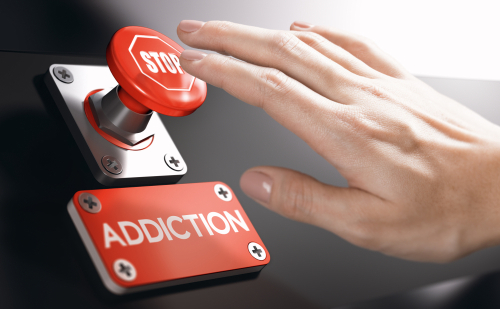The Merriam-Webster Dictionary defines addiction as “a compulsive, chronic, physiological or psychological need for a habit-forming substance, behavior, or activity having harmful physical, psychological, or social effects and typically causing well-defined symptoms (such as anxiety, irritability, tremors, or nausea) upon withdrawal or abstinence.” An individual struggling with addiction will prioritize satisfying his or her cravings (e.g., drugs, sex, gambling, etc.) above all else. Often, this does not only lead to developing a slew of adverse physical consequences, but can also negatively affect one’s relationships, finances, and could lead to legal complications. Addiction, also known as substance use disorder, is listed in the Diagnostic and Statistical Manual of Mental Disorders, Fifth Edition (DSM-5) as a chronic brain disorder. Substance use disorder is not developed instantaneously, nor does one’s recovery from addiction occur immediately. There are many different types of treatment options and therapeutic modalities used to treat addiction. Below are several distinct types of therapy that are commonly integrated into treatment plans for individuals recovering from addiction in Southern California. Ample support and a customized treatment plan will provide an individual with the highest potential for a successful recovery.
Cognitive Behavioral Therapy (CBT)
Cognitive behavioral therapy (CBT) works by addressing one’s thoughts. In the 1960s, a psychiatrist, Aaron Beck, invented cognitive behavioral therapy. CBT is based off of the idea that one’s thoughts govern one’s feelings, which in turn affects one’s behaviors. It focuses on challenging and changing unhelpful cognitive distortions and behaviors, improving emotional regulation, and developing personal coping strategies to problem solve effectively. Through short-term goals, cognitive behavioral therapy will help a person shift his or her thoughts to change his or her feelings, resulting in healthier patterns of behavior. CBT is typically done one on one and/ or in a group setting.
Dialectical Behavior Therapy (DBT)
Dialectical behavior therapy (DBT) is a type of cognitive behavioral therapy that places greater emphasis on the psychosocial aspect of therapy. Marsha M. Linehan initially developed it in the 1980s, to help treat chronically suicidal people with borderline personality disorder (BPD). Since its inception, dialectical behavior therapy has been and remains the gold standard method of treatment for individuals diagnosed with BPD and has also proven effective in treating individuals with other mental health conditions, including substance use disorder.
Interpersonal Psychotherapy (IPT)
Interpersonal therapy (IPT) was developed by Gerald Klerman and Myrna Weissman in the 1970s. IPT is a therapeutic modality that is most often used to treat individuals who suffer from anxiety disorders, eating disorders, depression, as well as other psychiatric disorders, including substance use disorder. Interpersonal therapy focuses on how a person’s communications and interactions with other people affect his or her own mental health. Through interpersonal therapy an individual will learn to resolve and adjust unhealthy interpersonal problems, resulting in a symptomatic recovery.
Eye Movement Desensitization and Reprocessing Therapy (EMDR)
This therapeutic method is based on the notion that physiological symptoms occur as a result of trauma or challenging experiences overwhelming the brain’s natural ability to heal. Psychologist Francine Shapiro developed Eye Movement Desensitization and Reprocessing (EMDR) therapy in 1987. According to the EMDR Research Foundation, “EMDR is an integrative psychotherapy approach that has been extensively researched and proven effective for the treatment of trauma. EMDR therapy includes a set of standardized protocols that incorporate elements from many different treatment approaches. To date, EMDR has helped millions of people of all ages relieve many types of psychological stress.” Though it was initially developed as a means to treat individuals suffering from anxiety, posttraumatic stress disorder (PTSD), panic and/ or trauma, research has indicated that it has since become an effective method of treatment for individuals diagnosed with substance use disorder.
Disclaimer:
The information above is provided for the use of informational purposes only. The above content is not to be substituted for professional advice, diagnosis, or treatment, as in no way is it intended as an attempt to practice medicine, give specific medical advice, including, without limitation, advice concerning the topic of mental health. As such, please do not use any material provided above as a means to disregard professional advice or delay seeking treatment.


